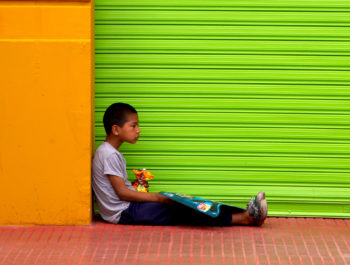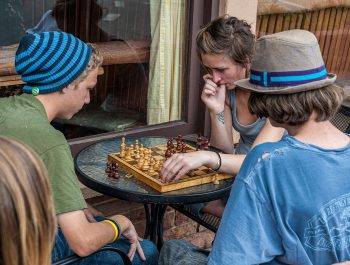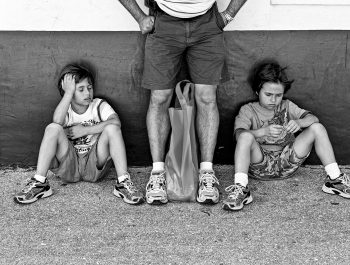Go Big or Go Small
“I could photograph the street that I live on for the rest of my life and never run out of subject matter.”
Edward Stiechen or Alfred Stieglitz
I’m not sure who really said this, but to me it doesn’t matter, it’s true.
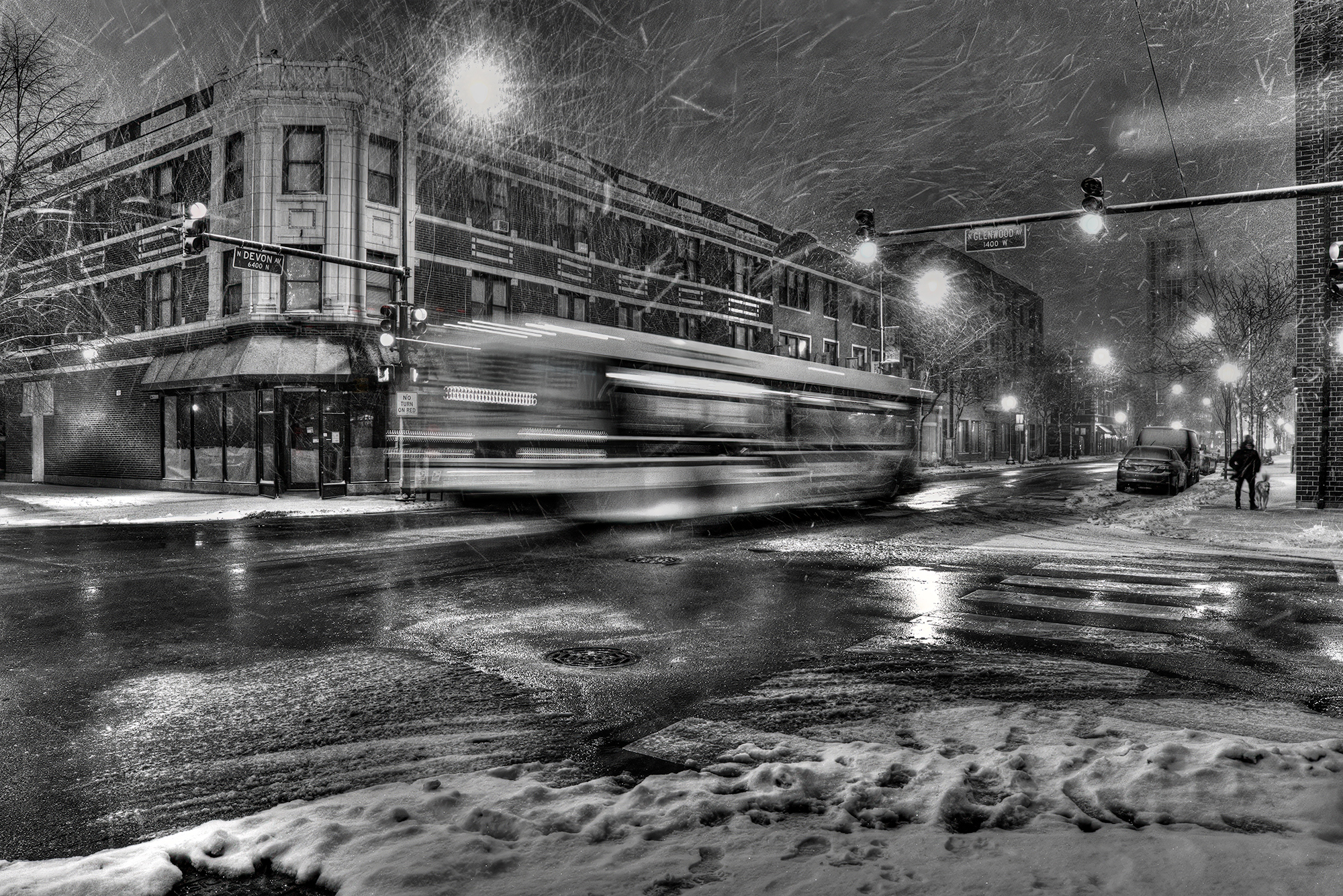
What do I mean by “Go Big or Go Small”? It has nothing to do with the size of your subject or the size of the print you are planning to make but where you are going to shoot.
I have had photographers say to me, “you’re lucky, you live close to the lake”, “you live in a big city”, or “I don’t have anything interesting close to me to photograph”.
To me, nothing could be further from the truth. With a little motivation and perseverance, there are great photos waiting for you wherever you happen to find yourself. I’m not saying it’s not desirable or a lot of fun to travel and photograph far away exotic locations. It is! Who wouldn’t want to go to India to photograph the Himalayas? How about a workshop to the Faroe Islands? Yes, I’m in favor of that, I think you should travel whenever possible. In fact, there are photographers who make a career of traveling to exotic locations. For many of us, though, we’re fortunate to get away once or twice a year. Let’s face it. There are 52 weeks in a year. You love photography and taking great photos. So, what are your choices? It’s simple, stay close to home.
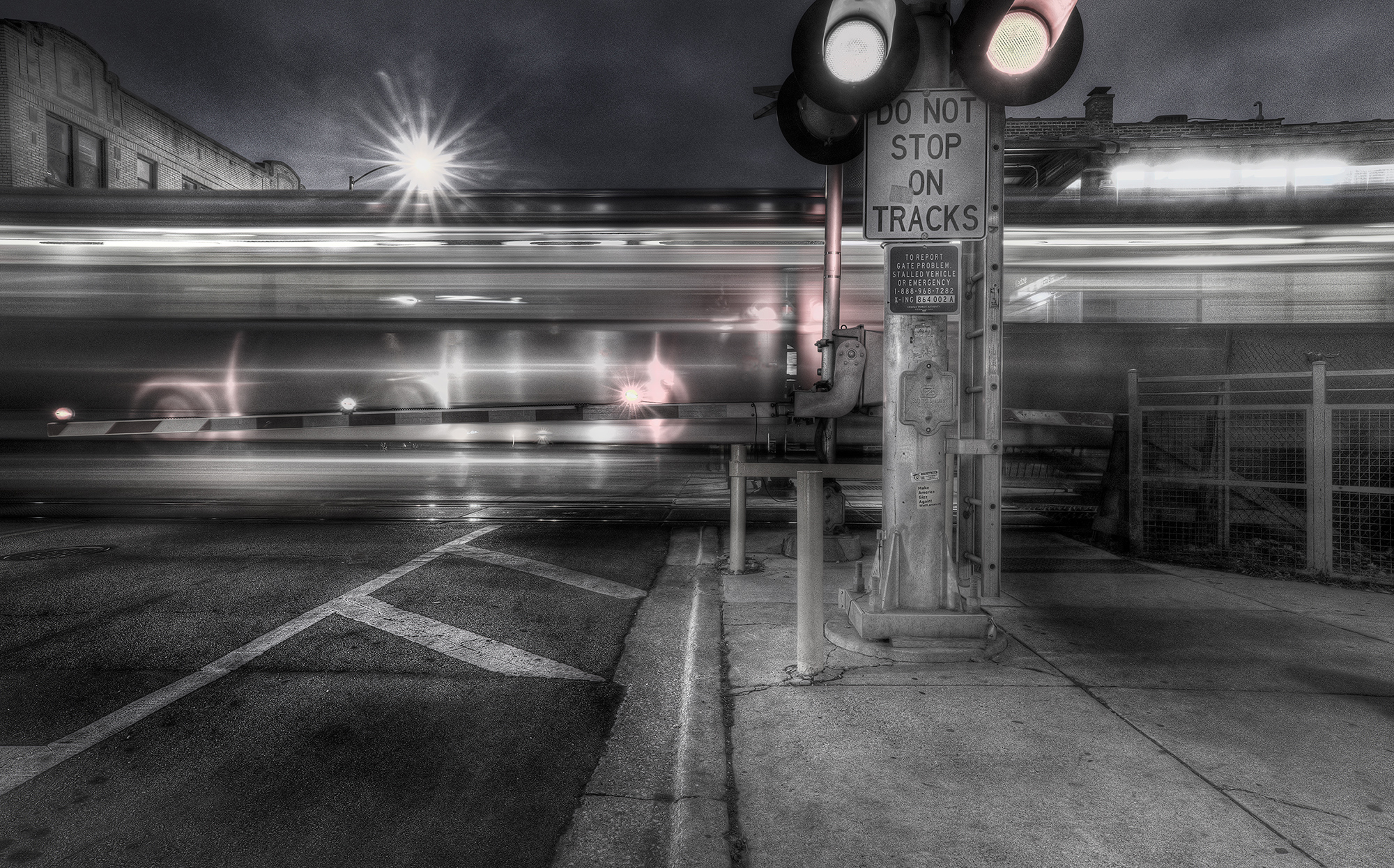
How close? It’s whatever you are comfortable with. Some mornings, I get up and drive to a location 15 to 30 minutes away. On other mornings, I feel like staying close to home, so I will walk my neighborhood or walk down to Lake Michigan (yes, I am lucky to live within walking distance of such a great natural wonder). 85% of my photography is done within 10 miles from home. Some of you may have to travel further, but probably not that much further.
What time? Sunrise, sunset, late afternoon, magic hour, blue hour, or the middle of the day? I only know what’s right for me. There are no rules. It’s up to you. Pick a time, give yourself a project, walk around, start taking photos. It could be your neighborhood, city, or county. It could be portraits of friends, work colleagues, family, or strangers in a coffee shop. It could be Hot Dog Stands. It could be things you find in the street. Let your imagination guide you. Your inspiration might not come right away, but it will.
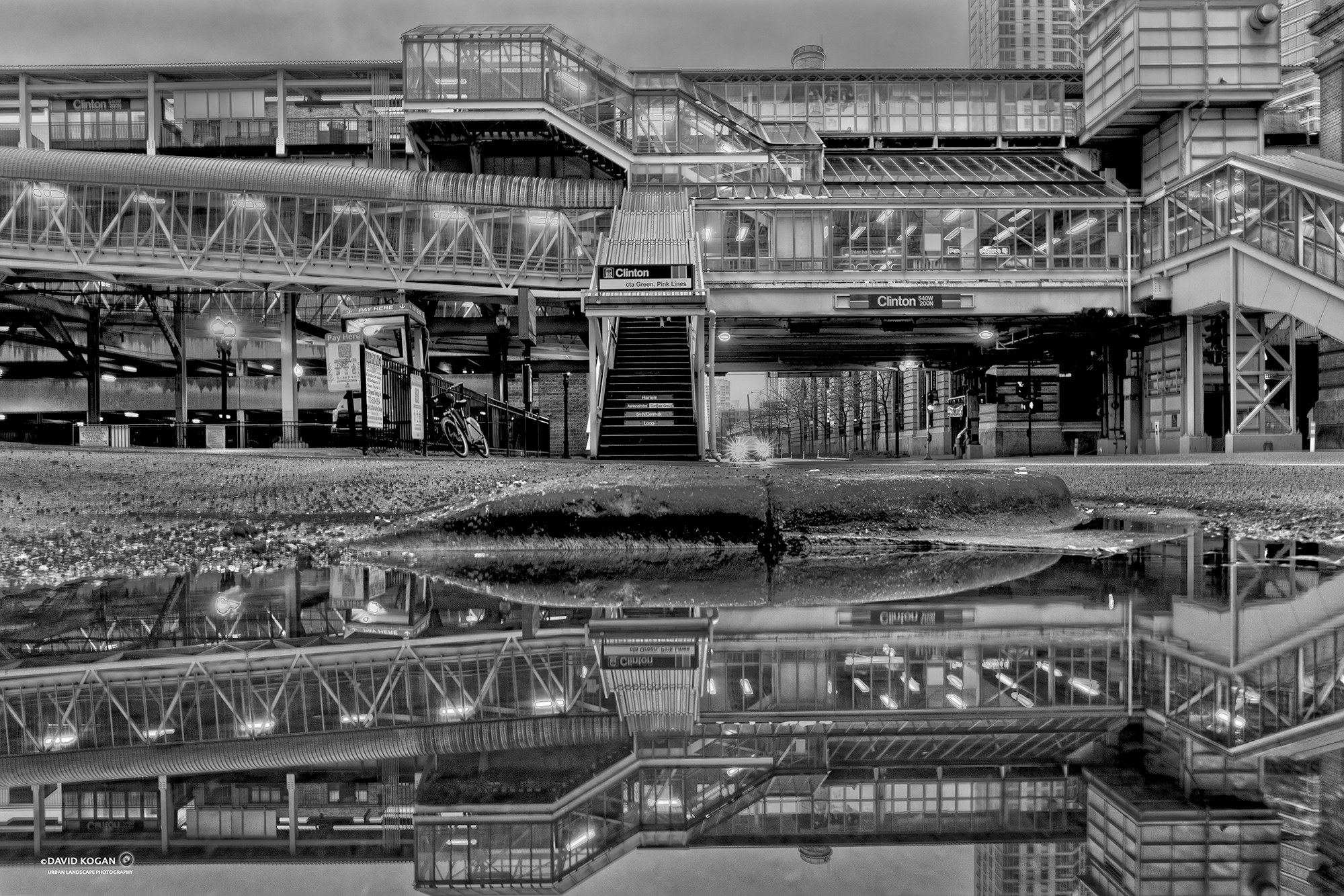
The more photos you take the more you will learn what you enjoy photographing. Your photos will reveal as much about you as the subjects of your photography. Put yourself into it. Keep going, day after day, week after week. Stop, turn around and look back. Sometimes the photo you think was in front of you turns out to be behind you. You will develop a style. Eventually, people will look at a photo and know that it is yours. At some point, you may need to break your own rules. A little cultural or photo revolution may be in order. Keep things fresh.
Remember, some of the most famous and influential photographers, such as Henri Cartier-Bresson, Willy Ronis, Gary Winogrand, Joel Meyerowitz, and Edward Weston, to name a few, worked close to home.
Weather? There is no such thing as good weather or bad weather. Go out when no one else would. “Nice” days are the middle of winter, when it’s snowing, or the wind is blowing. Wet streets make beautiful photos. Puddles open all kinds of possibilities. “Bad” weather equals great photos. You might be cold or get wet but if you have the correct outdoor gear, you will be comfortable. Every season has the conditions for great photography. If you think the light is bad, it’s probably good. Get your camera out and start shooting. I find that one of the best pieces of foul weather gear is a plastic bag from the supermarket with a hole cut out for your lens. Don’t give in to the weather conditions.
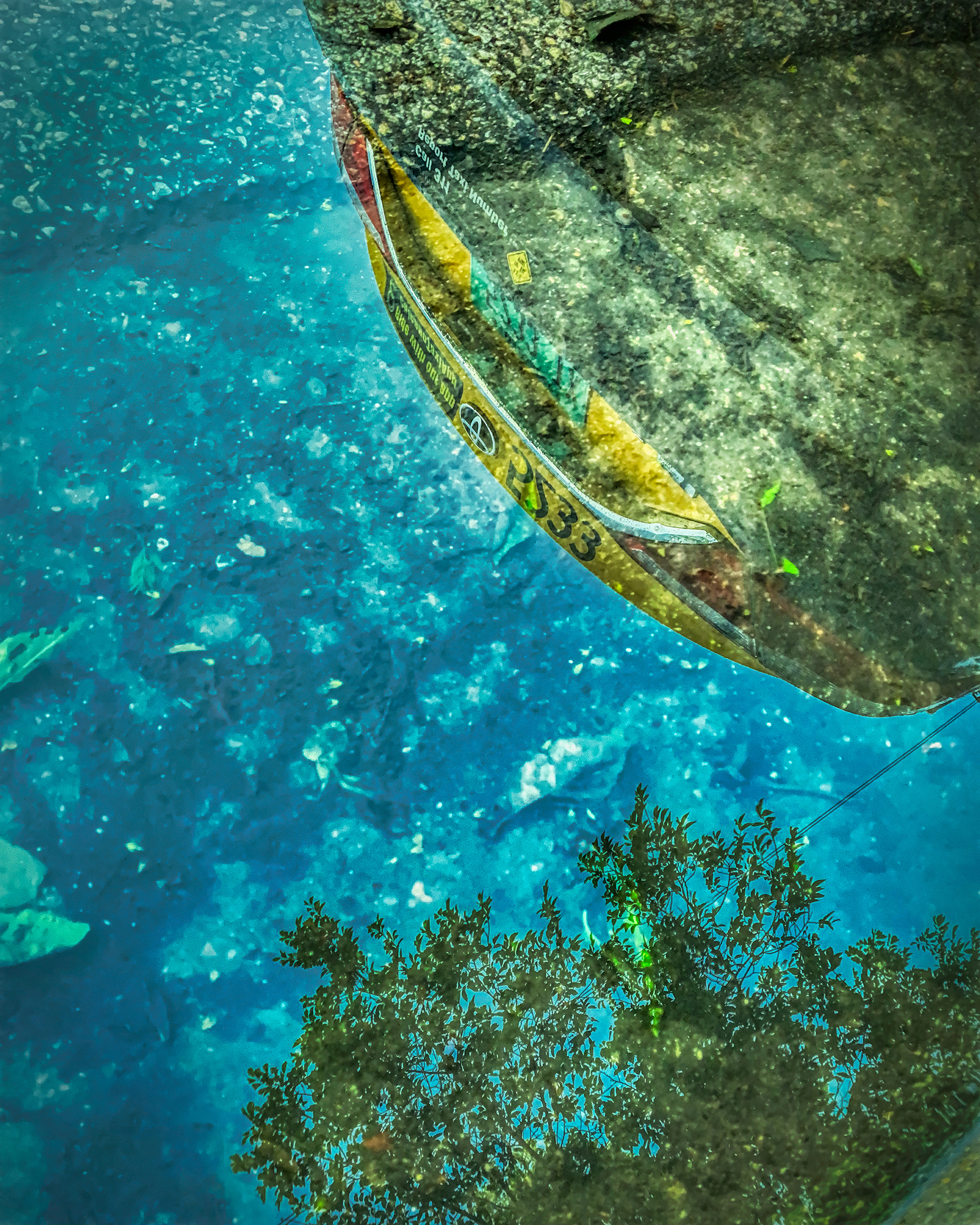
Find the unique. Most people travel through their day and do what I call – look but don’t see. Whenever you’re out you should be scouting locations. Use your phone to take photos of potential locations. It will record where you are so you will know where to go back to when you wake up at 5:00 am and head out. One of the big advantages of “going small” or being close to home is familiarity. On the other hand, you might find out you don’t know your area as well as you thought you did. I have lived in Chicago my entire life, yet I still get surprised. Discovery is part of the fun.
I started photographing early morning Chicago in 1985.I used to take a 4×5 view camera downtown with 20 sheets of black and white film. Technology and time have obviously changed everything. In the twenty-first century, I travel light, usually taking one body with one lens and a tripod. Most of the times it’s a zoom lens but many times a prime. It’s liberating to not burden yourself with too much equipment. It makes it so easy to move around. Many times, the photo you are looking for doesn’t present itself until right before you are ready to pack up. Other times, you have it after one shot.
I approach my early morning photography of Chicago as if I were taking a portrait. I want you to see the city where I grew up and have spent my entire life. What it’s like to wait for a bus when it’s snowing, and the wind is in your face. Sometimes I retrace my youth by photographing the grammar school I went to or where my father took me fishing. Other times, I want to show you where I went to the Opera the night before. Tell a story. Make it personal.
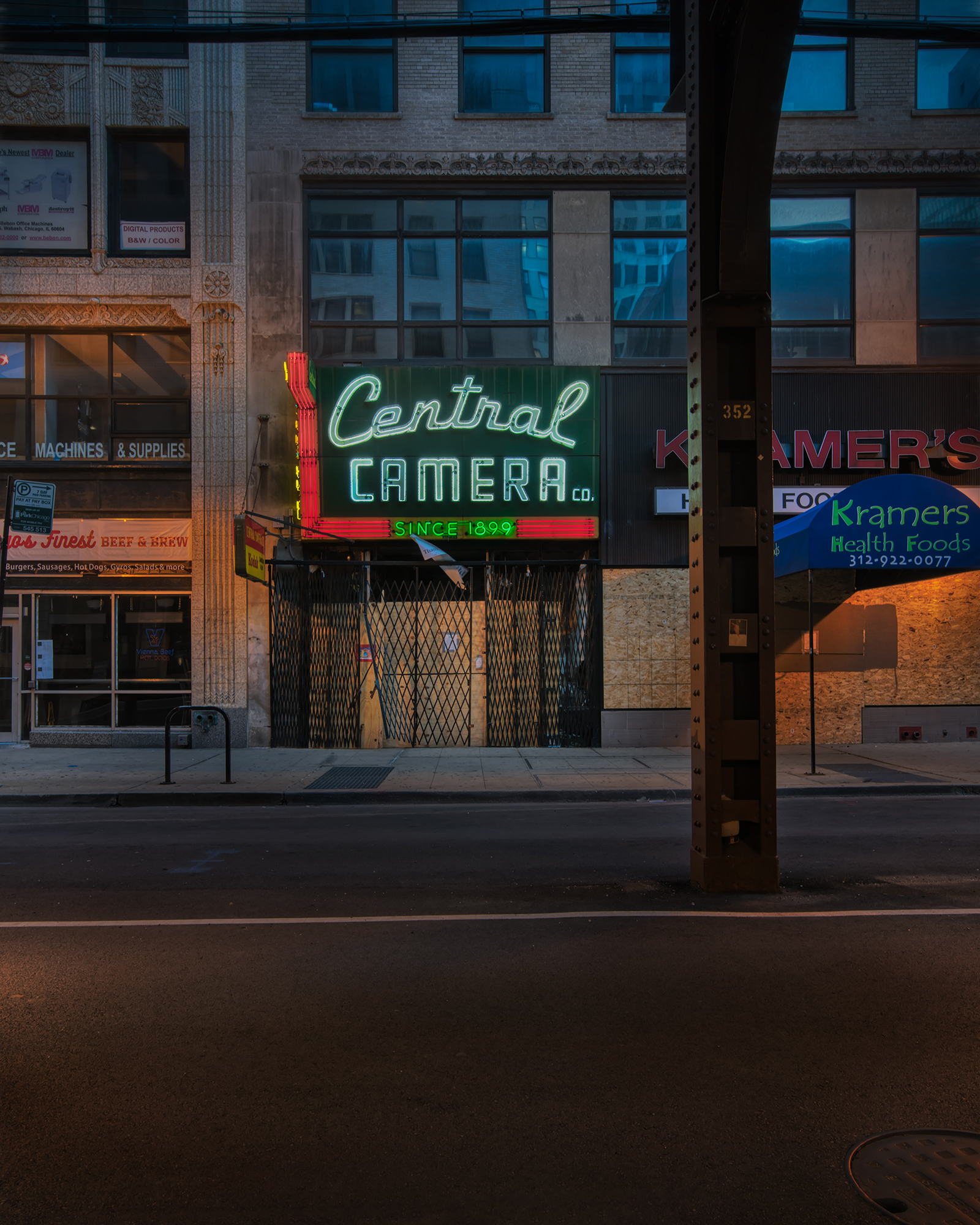
Let’s talk about Equipment. Sorry, but you don’t need the latest camera or lens to take great photos. Buy last year’s model, go back 3, 4,5 years. With my Sony mirrorless bodies I can adapt my Canon lenses that are 20 to 40 years old. You can buy these lenses on eBay for next to nothing. You might have to put your camera on manual, but you’ll be in charge. No one will know you’re shooting with a 40-year-old lens unless you tell them. In many cases I prefer the older lenses on manual to my new modern lenses. There is nothing between you and the settings you want. They actually have aperture settings and depth of field scales right on them.
Use your phone, the new cameras on the latest iPhone, Samsung Galaxy, or Google Pixel are nothing short of amazing. The secret is to learn how to use them to their limits. If you do the results will astound you. These new phones are computational photography marvels.
It’s your vision. Put yourself into it. Your photos will reveal who you are, how you see the world. The people who view your work will see something new.
In the end it’s all about doing what you love. Getting out and making great photographs.
Go small, think big.
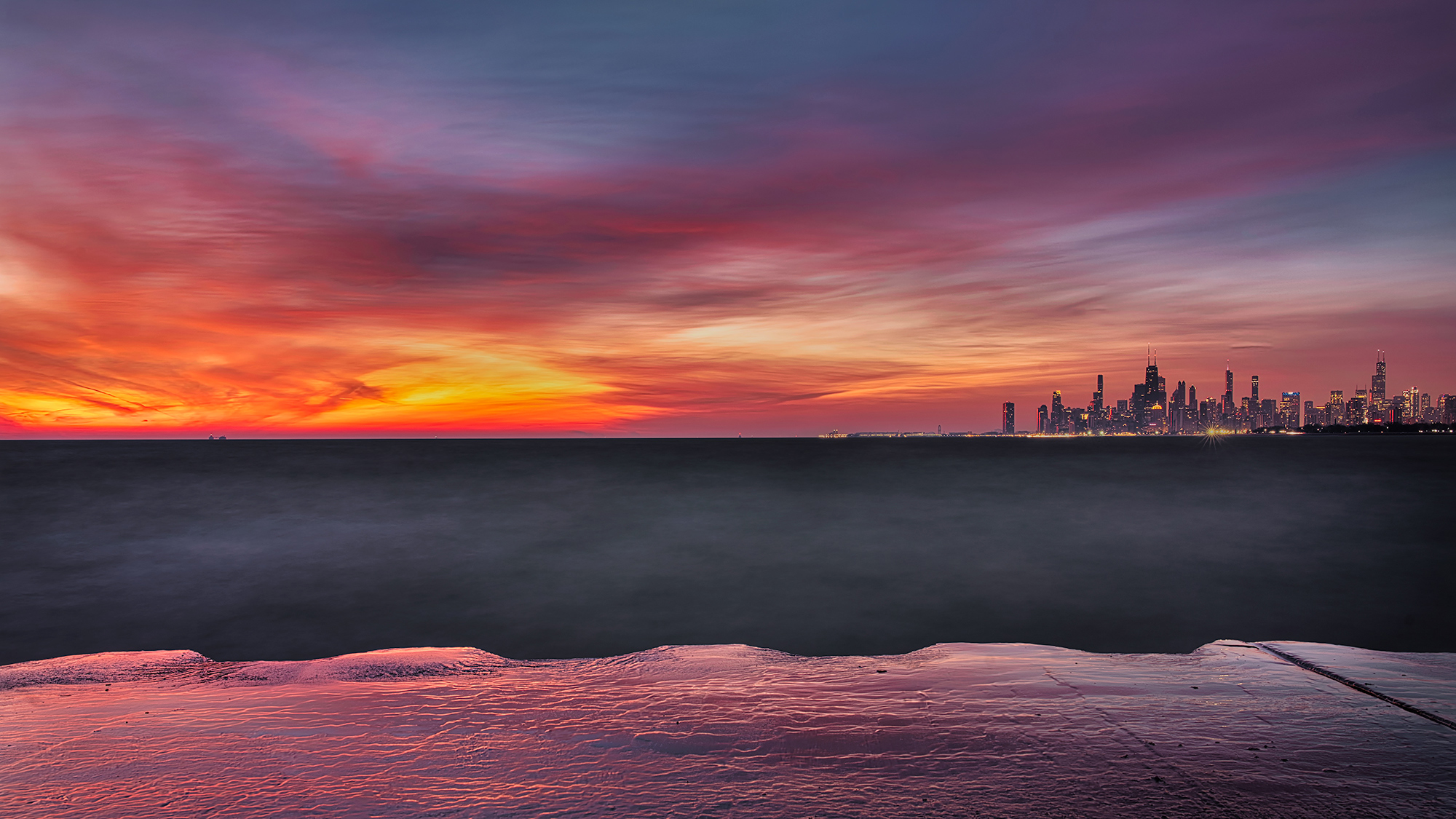
David Kogan
May 2024
Chicago, IL
I started my career in commercial photography as a photographic assistant at Promotional Arts Studio in Chicago. After spending a year there, I suffered from what I called “swatch fever”, acquired from spending all day photographing fabric swatches for Sears. Coming to the conclusion that this environment and I were not meant for each other, I left my job and Chicago to travel and explore other alternatives. When I returned, I decided to freelance as a photo assistant. Specializing in advertising and location photography, I opened my own studio in 1976. I have worked for many of the major advertising agencies and corporations, such as Leo Burnett and FCB Chicago. For many years I shot for American Airlines in flight magazine, American Way. I have photographed people from various professions, from bank presidents to chicken farmers, from heart surgeons to pizza chefs, and from authors like Isaac Bashevis Singer and Studs Terkel to working men and women. While pursing my photographic career I have always photographed what interests me the most, the empty urban landscape. I have spent years chronicling early mornings in every part of Chicago. If you are out early on a winter morning and see someone hunched over a camera, dressed for Arctic weather, that is probably me. No matter where my travels take me, you will find me out searching for what the early morning reveals. Though as fate would have it, I still photograph a swatch every now and then.






